
Archive for January, 2017
An Audi success story – 8 million cars with quattro drive
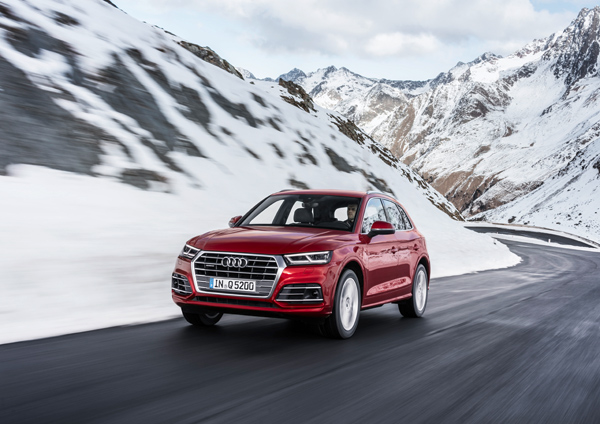
The brand is celebrating a special milestone that also is a fitting occasion for this time of year: rolling off the production line at the new plant in San José Chiapa is the 8 millionth Audi with quattro drive – the technology that delivers a big, built-in boost in safety and driving pleasure, even on snow and ice. The milestone car is a garnet red Audi Q5 2.0 TFSI quattro
quattro technology made its debut in 1980, and today it is available in more than 100 model versions. The quattro all-wheel drive system is standard in the Audi Q7, the Audi A4 allroad quattro, the Audi A6 allroad quattro, the Audi A8, the Audi R8 and all S models and RS models, and it is available as an option in all other model series. In 2015, 44 percent of all Audi customers worldwide chose models equipped with quattro drive. The AudiQ5 topped the list with about 262,000 units. The quattro models generated particularly strong sales in the United States, Canada, Russia and in the markets of the Middle East.
Audi offers the quattro drive in different versions tailored to each model. This effectively ensures that drive torque can be distributed variably to both axles according to the driving situation.
The self-locking center differential used in many Audi models, with a longitudinally mounted front engine, is a purely mechanical planetary gear. Normally it splits the drive torque sent to the front and rear wheels with a 40:60 distribution.
Sport differential is available on the rear axle with some of the top-of-the-range engines. It actively distributes the torque between the rear wheels and in extreme cases can send almost all of the torque to one wheel. This actually pushes the car into the curve, eliminating any chance of understeer.
Latest development: quattro with ultra technology
The latest phase of development from Audi is the quattro drive with ultra technology which makes up for driving situations where the all-wheel drive doesn’t offer any advantage. The system’s control unit uses a multitude of data to produce a model of the vehicle’s status projecting about half a second into the future. If the system detects, for instance, that the inside wheel is about to lose grip, it switches to all-wheel drive. As a result, the all-wheel drive is always ready when it is needed. The new concept considerably boosts efficiency without diminishing traction or driving dynamics.
Success story: the history of quattro
Audi achieved a milestone in automotive history with the quattro permanent all-wheel drive – in 1980, no other manufacturer offered a fast-running and light all-wheel drive for high-volume production. The technology premiered in 1980 in the Ur-quattro at the Geneva International Motor Show. In 1986 Audi replaced the first generation’s manually locking center differential with the Torsen differential, which could variably distribute drive torque. The planetary drive followed in 2005, with its asymmetrical, dynamic distribution of power and torque. The self-locking center differential is continuously being further developed by Audi and is considered the benchmark for traction and driving dynamics combined with very light weight.
Audi has also celebrated many triumphs in motorsport with quattro technology. The list so far includes four World Rally Championship titles, six victories in the famous Pikes Peak Hill Climb race in the United States, a title win in the TransAm series in the U.S., two DTM titles, 11 national Super Touring Car Championships, and a Touring Car World Cup. The latest victory for quattro technology: In late November, Mattias Ekström and his private rallycross team EKS captured the Driver World Champion and Team World Champion titles with the Audi S1 EKS RX quattro in the FIA World Rallycross Championship.
Consumer Fair is back!


The 19th Consumer Fair (CF19) officially opened its doors to the public yesterday in a ceremony at the International Convention Centre (ICC) in Berakas, officiated by Dato Seri Setia Awang Haji Mustappa bin Haji Sirat, the Minister of Communications.
The opening ceremony was initiated with the recitation of the Surah Al-Fatihah and a Doa, followed by a welcoming speech from Dato Paduka Haji Danial bin Haji Hanafiah, the Executive Director of D’Sunlit Sdn Bhd, who said that the event is especially intended to promote products and services from small and medium enterprises (SMEs) to a broader market.
More than 400 booths have been set up at the ICC this year, with several entrepreneurs from Malaysia, Cambodia, Singapore and Pakistan participating alongside local vendors.
With the uplifting theme of ‘The Year Is Yours. What will you do with it?’ CF19 is focused on giving back to society, and among the charities benefiting from the proceeds are the Society for the Management of Autism Related issues in Training, Education and Resources (SMARTER) Brunei, Pusat Ehsan Al-Ameerah Al-Hajjah Maryam (Pusat Ehsan), the Brunei Darussalam National Association of the Blind (BDNAB) and Children’s Cancer Foundation (YASKA).
Meanwhile, a number of fun activities have been lined up for the fair, where visitors can take part in hot dog and chicken wing eating contests, an ice-cream-making contest and a cupcake-decorating demonstration.
CF19 is open to visitors from 10am to 10pm till Sunday, while on Friday it will be closed from 12pm to 2pm, for Friday prayer. Text courtesy of Lyna Mohd of Borneo Bulletin.
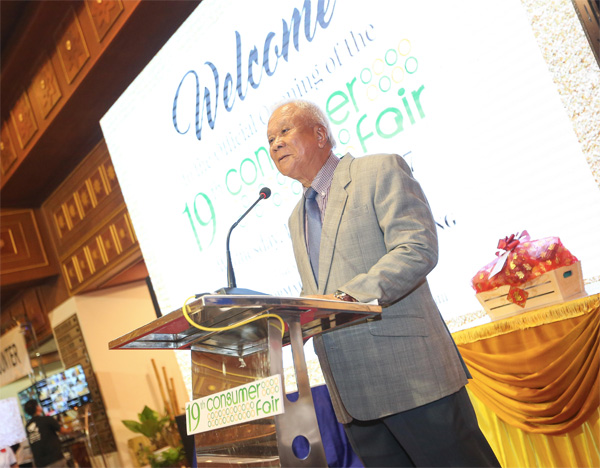



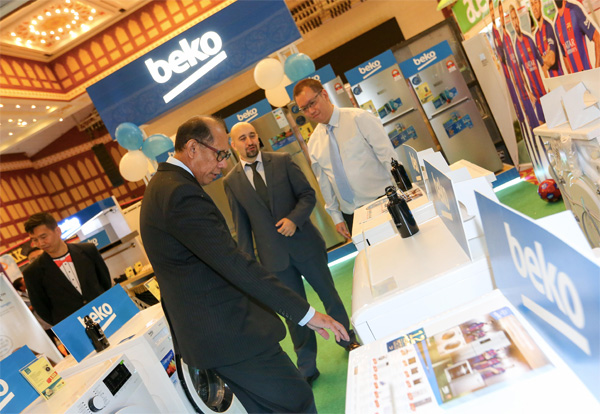
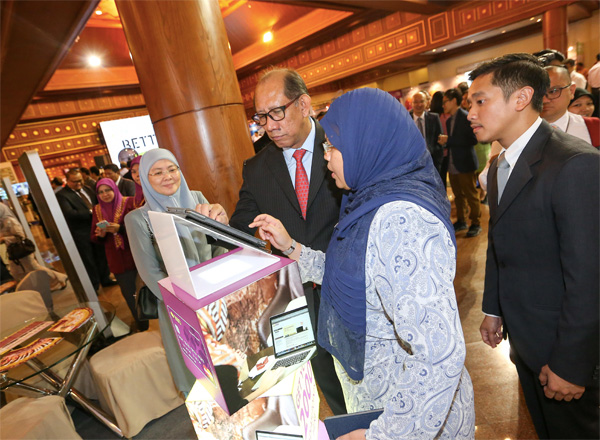




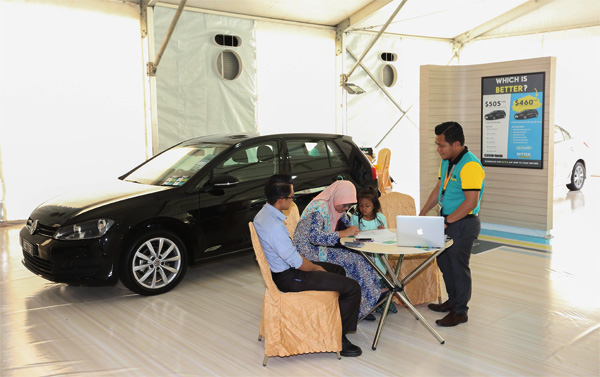

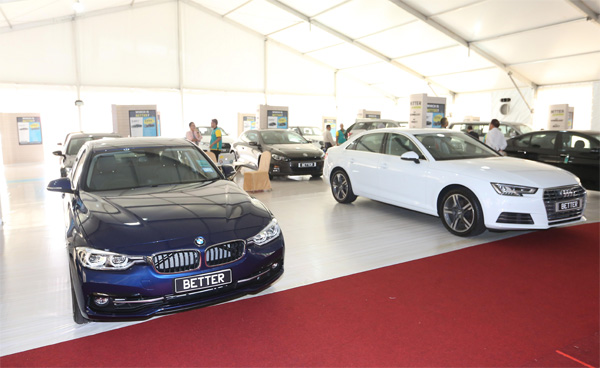




“Get It Done” lucky draw

Chances to win a Samsung phone
Get It Done app is running a competition for “Buyers” where you can stand a chance to win a Samsung phone. The idea is for the “buyer” to either buy a product or hire a vendor for a service through the “Get It Done” app. They are also participating at the Consumer Fair from 18th to 22nd of January at ICC.
Just refer to the image above.
How does the app work?
So the main idea of the “Get It Done” app is to bridge the gap between Purveyors and Customers. For your info, purveyor is a person who sells or deals in particular goods so hence the seller or provider. The great thing is that you can do this at your convenience, where you are.
If you happen to be a Vendor, you can enjoy privileges such as :
• Receive Requests from Customer’s for your Services
• Send Quotations to your Customer’s
• Post Services that you offer
• Post Products that you’re selling
• Post Portfolio of your completed or ongoing job, orders or testimonials
• Get Offers and Orders for your Product and Make Sales!
• Chat with your Customer’s
Now what is it in for the customer end? Well, choices will be so much easier for you for the services you sought for.
• Get to receive Multiple Quotations to different vendors at a time – Here you can compare prices
• Find and Hire the best vendors because you know what’s best!
• Find and Purchase products that you had in mind
• Can’t find it? That’s okay, Send Requests to make a special order with your purveyors.
• Who doesn’t love a good discount? Go ahead bargain with your vendors
• A variety of Business Profiles for you to view
So now you don’t have browse on your IG feed to look for that particular vendors or providers. It’s all provided in one single app and at your convenience. Another way to shop online.
Techbru Solution will be blogging about the feature until the end of countdown, stay tune for more, follow Them on Instagram and Facebook. Visit www.gogetitdone.com for updates! Available soon on Apple Store and Google Play and it’s coming to Brunei, Singapore and Malaysia.




Devin Kho won himself a Meizu phone as he was drawn as the lucky winner for being a vendor at Get It Done App last October 2016.
TAIB entrepreneurial workshop

Group photo with the invited speakers and the participants

Shafique Hussain, CEO of Start-Up Hub with Nilam Sari, Owner and Marketing Director of Baba Rafi Enterprise (Indonesia)
In conjunction with TAIB 25th Anniversary, Perbadanan Tabung Amanah Islam Brunei (TAIB) has been conducting workshops for their 54 participants for the past two weeks. In collaboration with Darussalam Enterprise and Start Up Hub, the workshops aims to train and educate the participants on building business proposals and pitching to potential investors. It also ensures the participants have the ability to build and sustain their potential business ideas.
Yesterday, 16th January 2017, the participants are treated to an inspirational day at the D&T Auditorium. Moderated by Shafique Hussain, CEO of Start-Up Hub, the participants are able to learn from successful entrepreneurs: Nilam Sari (Indonesia)- Owner and Marketing Director of Baba Rafi Enterprise, Josan Astrid (Philippines)- Creative Director of Astrea Software Development and Shawn Hoon (Brunei)- Editor and Publisher of Inspire Magazine.
The TAIB 25th Anniversary Entrepreneurship program ends on the 18th January 2017.
Speaking to Effendi bin Hj Said; “What we aim with conducting this inspirational day is to give the participants more confidence in their business journey. Not only will they have the chance to listen to the journey from successful entrepreneurs, we hope that this will give them more ideas that can be added to their business plans in order to make their business development more sustainable with the current market.”

Nilam Sari speaking to the participants yesterday

Some of the participants during the talk

Shawn Hoon, Editor and Publisher of Inspire Magazine

Josan Astrid, Creative Director of Astrea Software Development (the Philippines)

Effendi bin Hj Said, Head of Business Banking of Perbadanan TAIB asking a question or two
Some Q&A from participants
NAME: Raizah bin Muhd Zaini
BUSINESS: RIZ KITCHEN
What made you join the T25 Program?
As local business, there is always so much to learn especially in this thriving generation and current economic situation. This business is my passion. I lover serving good food to other people, so I want to make my business a strong and sustainable one.
What did you learn from the program?
The program really gave me new insights on business management. Having plans and projections and the constant monitoring of my business. It definitely adds to my knowledge in making my business model grow and become sustainable.
How did the Inspiration Day help you in what you’ve learned over the past two weeks?
I can definitely relate to the experience of the speakers, especially Nilam Sari of Baba Rafi Enterprise since it’s also from the food and beverage industry, She showed me that in business, there are times of failure but what is important is to keep motivating yourself to succeed. There is so much to take away from the talk and I’ll definitely doing more research and homework even after the workshops.
NAME: Cheong Yee Kuan
YKS Crafts Paradise (Jewellery Making)
Why did you choose this business?
I love wearing jewelleries and I love customizing them. I see a gap in customising and repairs and since I have the skills, I decided to take it up.
How did the T25 Entrepreneurship workshop help you?
The whole workshop totally open up my eyes. The most important thing is I thought I knew what it takes to run my company. When I joined the workshop there are still a lot of things I thought I knew, but I never knew. The coachers share everything they knew and everything is so transparent and I learned so much from them.
How do you feel after attending the two-week workshop and then today’s inspiration day?
I am totally inspired. I love how they shared their journey- not just their successes but also their failures. It definitely gave me the confidence to move forward and make this business and my passion a success.
NAME: Saedah binti Hasnal
BUSINESS: bruvera.com
Why did you decide to join the T25 Entrepreneurship Program?
When talking about business, it never really was in my plan. I never thought, growing up, that I am going to open a business. But after graduating, and attending workshops and bootcamps, I started getting really interested in starting up my own business.
How did the T25 Entrepreneurship workshop help you?
It definitely helped me a lot. It really is targeted towards people who are just starting out. So it’s step-by-step and very beneficial for us start ups. The way of coaching as well goes in detail as to what we need to know to begin and then go into more detail about making it sustainable.
How do you feel after attending the two-week workshop?
I felt it was very beneficial. I did not want to miss this and I am glad I didn’t. Everyday I go to the classes and meet people who are on the same boat as me, with the same goal and I learned so much from the coaches as well as interactions with people from the class. T25 Entrepreneurship program provided me with this platform to expand my business and network and the coaches from Startup Hub really helped build my confidence.
NAME: Shafique Hussain CEO OF START-UP HUB
How did this collaboration came about?
Well, TAIB in conjunction with their 25th Anniversary had initiated this program and came to DARe who later recommended that we came in as coaches to the participants.
How was the selection process?
First of all, our goal collectively is to diversify the economy. So we’re glad that we have a wide variety of businesses applying for the grant from agriculture, retail to web development and many more.
What was your approach in coaching the participants?
Our goal is to ensure that the participants came out of the course with the essentials needed to start up a business. You can’t learn everything in two weeks, but our approach is to give them the basics and continue to monitor their progress even after the program ends.
What did you notice from the participants after two weeks of workshop?
We’ve definitely seen their mind shift. If you go back to the first part of it, we started with personal development and self-reflection cause it is the first step and after that comes the business knowledge. From what we’ve seen, we see a lot of them progress in terms of approach and their awareness of various aspects of their business.
What do you hope the participants take back from the Inspiration Day speakers?
I think what they need to know is in business it takes a lot of patience and perseverance. And to have focus; we as humans sometimes lack focus. We lose focus easily- for instance we lack interested in ideas and especially losing focus due to failure. We notice a lot of startups, once they fail they just give up. We hope that this inspiration day will help shift their mind set to persevere in their respective businesses.
HP DeskJet Ink Advantage 3635

Now available at Bilster Technologies at Citis Square
Features of HP DeskJet Ink Advantage 3635
Easy mobile printing
Start printing and get connected quickly with easy setup from your smartphone, tablet, or PC.
Connect your smartphone or tablet directly to your printer—and easily print without accessing a network.
Manage printing tasks and scan on the go with the free HP All-in-One Printer Remote mobile app.
Easily print from a variety of smartphones and tablets.1 Your pages come out great—even if you’re not there.
Affordable, high-quality printing
Print all the quality photos and documents you need for a great value with HP’s lowest-priced ink cartridges.
Get high-quality prints—time after time—using the world’s No. 1 printer brand.
Everything you need—right away
Simplify your tasks. The display panel features simple icons for controlling print, scan, and copy functions.
Put your best print forward. Create borderless photos, flyers, and other documents—right in your home.
Get up and running right out of the box and automatically connect to your wireless network.
Designed to fit your life
Save your space with a compact all-in-one designed to fit on your desk, on a shelf, or anywhere you need it.
Print in any room you choose—without causing disruptions. Optional quiet mode helps keep noise to a minimum.
Baiduri’s “Pay Smart & Win”

The 10 lucky winners from the “Pay Smart & Win” promotion feted last week at Baiduri’s HQ
As part of the ‘Pay Smart & Win’ promotion, active Baiduri Smart Executive Programme (SEP) members and Smart Executive Auto Direct Prepaid Card holders were automatically entered into a lucky draw to win amazing prizes. SEP members and Smart Executive Auto Direct Prepaid Card holders who purchased any top-ups or made any payments using Baiduri’s e-Channels, during the period of 1 September 2016 to 30 November 2016, were entitled to lucky draw chances.
10 lucky winners drew their own prizes during a prize presentation at Baiduri’s headquarters in Kiarong last Friday. The winners took turns to select an envelope from the draw bowl and simultaneously opened their envelopes revealing their prize.
Kong Yeung Yih walked away with the Bang & Olufsen Beoplay H7 headphones. Lim Mei Fong drew a Sony Playstation 4 while Shahrin bin Hj Shamsudin won an Apple iPad Mini 4. Filzah Fatinah binti DP Hj Mohd Hamid received a return ticket to Bangkok, Thailand whilst Lim Eng Seng Rickie received an LG 360 Cam. The remaining winners received MasterCard CashCards valued at BND100 and BND50. The prizes were presented by Hjh Maripaz Abdullah, Manager of Business Development, Programs and Special Accounts; Hj Mohamad Rayme bin Hj Bakri, Marketing Manager of Baiduri Finance; and Jazline Rose binti Dolamit, Senior Officer of E-Banking Centre, Commercial Unit at Baiduri Bank.
According to Hjh Maripaz Abdullah, “Through the use of Baiduri’s e-Channels, our [Smart Executive Programme] members are able to do more in the same amount of time as a customer that is not utilizing the most of what the Bank and, subsequently, the Programme can offer. SEP aims to provide a variety of options through which their members can manage their finances at their convenience.”

Briefing the shortlisted winners before the event

Opening up the envelopes to check our prizes

I managed to draw a prize for Lim Mei Fong, a Sony PS4 and handing over was Hjh Maripaz Abdullah, Manager of Business Development, Programs and Special Accounts

She won a ticket to Bangkok

Lim Eng Seng Rickie won hims a LG 360 cam, receiving from Hj Mohamad Rayme bin Hj Bakri, Marketing Manager of Baiduri Finance

Free style pose
Baiduri Bank’s e-Channels include Baiduri Personal i-Banking, Baiduri Mobile Banking or ATM/Cash Deposit Machines. Payments using Baiduri Bank’s e-Channels include Real-time Hire Purchase payments, bill payments and/or Fund Transfers.
Baiduri’s Smart Executive Programme is a unique programme by Baiduri Bank which offers a multitude of benefits geared towards the busy, working professionals. The benefits include smart banking solutions plus invitations to investment and lifestyle events. Members stand to enjoy benefits such as exclusive Smart Executive Premium Debit Cards, access to Smart Executive Centres, and exclusive offers. More information on the Smart Executive Programme is available on www.baiduri.com or from the Baiduri Deals mobile app.
B&O’s Flexible Living Launch

Reuben Chin, Manager of Sejalin Living, speaking to the guests yesterday at Bang & Olufsen showroom
Yesterday, Sejalin Living unveiled their Flexible Living launch at their B&O store and also their new payment system, the “Flexible Payment”. The management also announced a special prize for their gimmick known as “Humblebrag” and you can win yourself a brand new B&O TV.
But first let share with you the latest products from Bang & Olufsen.
BeoSound 1 and 2 are the newest members of the Bang & Olufsen BeoLink Multiroom portfolio that connects your Bang & Olufsen products into one wireless music system across the home. Connect up to 8 BeoSound 1 and BeoSound 2 in a multiroom set-up.
BeoSound 1 and BeoSound 2 are wireless speakers designed for convenience, crafted for mobility and featuring an impressive 360 degrees of spherical sound magic. Both are Bang & Olufsen’s answer to an ever-changing everyday life; they are both ultra flexible in terms of usability, connectivity and placement options – and they deliver an unparalleled 360-degree sound experience no matter where the speakers or you are placed.
“We live in a time of cord cutting where everyone wants more freedom. No one wants to be hindered by technological restriction, says Marie Kristine Schmidt, Vice President Brand, Design & Marketing and continues, “BeoSound 1 & 2 is designed to cater for a flexible lifestyle where music blends naturally into the home. The design is unobtrusive yet powerful, underscoring the purpose of the speakers”.
Both are available at Sejalin Living showroom.

Malek Manan, Resident Audiophile of Sejalin Living, doing a product demo on the BeoSound
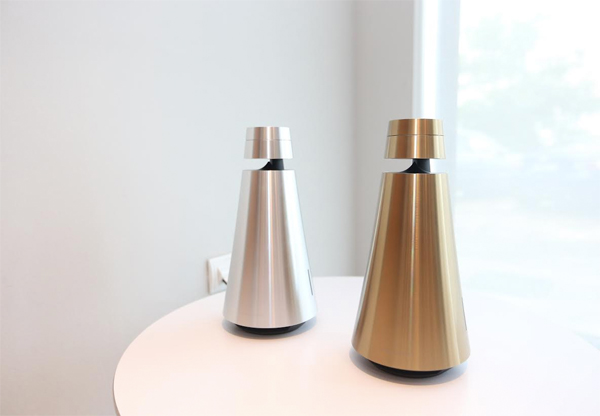
BeoSound 1 and 2 looked gorgeous
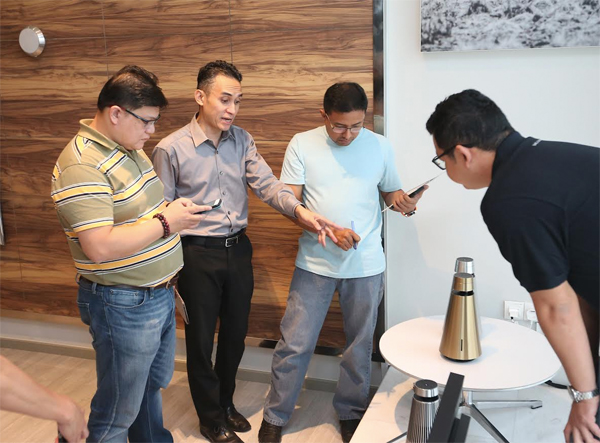
Guests getting up close and personal on the BeoSound 1 and 2
Now meet BeoVision Horizon TV. BeoVision Horizon is a screen for flexible living, crafted in sleek, black aluminium and built upon the Android TVTM platform. The new Bang & Olufsen 4K Ultra HD TV features powerful sound and crystal clear images that automatically adjusts to light conditions.
BeoVision Horizon is designed to meet the modern lifestyle demands of flexibility, connectivity and extraordinary quality. It is also a lifestyle where your home takes on different roles and adapts quickly to the changes in your daily routines. Enter BeoVision Horizon, a screen that literally fits in anywhere regardless of your way of living and decorating. It is also a less formal, more casual TV experience you get with today’s introduction, one that follows your rhythm – and one you actively can choose as the centre of entertainment.
This new 4K Ultra HD TV offers total freedom in terms of placement – with automatic image optimization for varying viewing conditions – and the ever evolving Android TV platform brings integrated access to all your favourite content and entertainment apps.
Much to love on the BeoVision Horizon – its minimalistic design (placed on wheels or mounted on the wall), its optimum picture and sound equipped with the Immaculate Wireless Sound, its smart access to online content and its BeoRemote One and Multiroom, ergonomically designed to seamlessly integrate with other Bang & Olufsen products.
BeoVision Horizon is available as 40” and 48” at Bang & Olufsen Showroom, Kiarong.

Check out the gorgeous TVs from B&O

A guest eyeing on the new BeoVision

Refreshments from The Food Brigade
Win a BeoVision Horizon 40″
Ok, now about the ultimate humblebragger competition. It’s kinda simple and you don’t need to post anything related to B&O or its products. So here goes.
So, all you have to do for a chance to win, is to share your best humblebrag on their Bang & Olufsen Facebook.
1. Find your best humblebrag.
2. Take a screenshot if it’s a post.
3. Post the picture in the comments below.
4. The entry with the most likes will win!
The postings are only applicable if you post them on Bang & Olufsen’s Facebook. Refer to the image below and just comment with your image and your humble brag.
You can also watch this youtube video below to get some idea of humble brag.
Humblebragging – This is how you do it

Click image to enter Bang & Olufsen’s Brunei Facebook Page
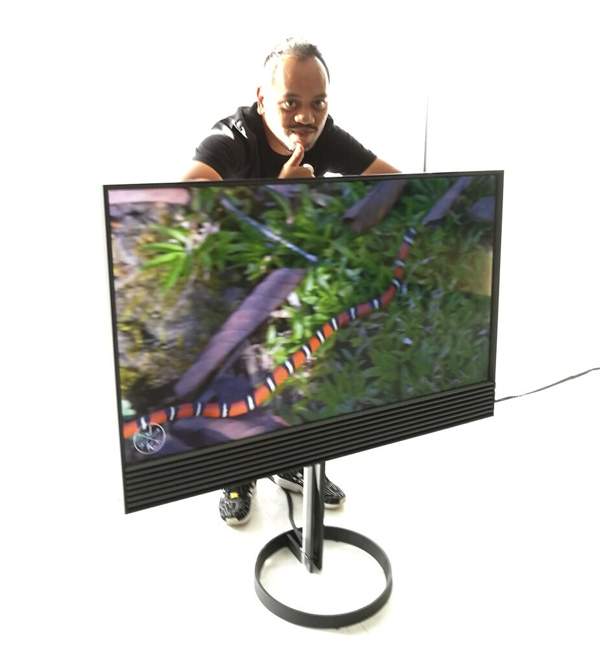
This could be yours (or mine) *big grin*
Flexible Payment
Easy monthly payment – Spread the cost with our flexible payment scheme. For every purchase from our store, you have an option to make one time payment or regular recurring payment by ‘Direct Debit’ in 3/6/12 months*
No interest or fees – your purchase order will be split accordingly to the monthly payment of your choice, no extra fees, no interest or confusing fine print!
*For BIBD customers only.
Md Rafiuddin won a Kia Carnival
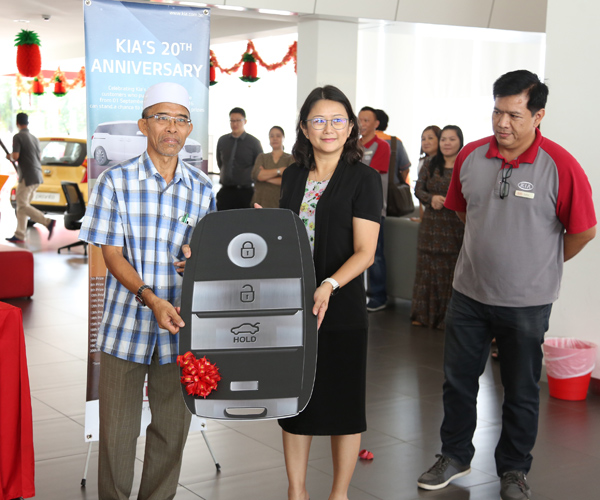
Hj Mohammad @ Hj Ali Bin Hj Puting on behalf of his son receiving the mock key of the Kia Carnival earlier this morning
Kia marks its 20th anniversary in Brunei Darussalam through its promotion entitled “Kia’s 20th Anniversary”. 20 lucky customers out of almost 400 participants were shortlisted today, 9 January 2016 at their showroom in Beribi. These customers purchased Kia vehicles from 1 September to 31 December 2016. Each of them will bring home a prize on the grand draw slated in Friday, 13 January 2017 (today).
The prizes to be won are Apple products, Samsung gadgets, LG appliances, Harman/Kardon speakers, a trip for two to Seoul, South Korea and a brand new 8-seater KIA GRAND CARNIVAL 2.2L SX (A) CRDi.
Friday the 13th is a lucky day indeed for Md Rafiuddin Bin Hj Mohammad represented by his father Hj Mohammad @ Hj Ali Bin Hj Puting – he just won a brand new KIA GRAND CARNIVAL. Md Rafiuddin recently bought a Cerato last month at Kia Motors.
Present during the shortlisting were finance representatives –Hj Mohd Ali Hj Metussin, sales manager from Baiduri Finance Berhad and Asharul bin Norshahari Kamaluddin, assistant marketing and public relations manager from BIBD AT-Tamwil Berhad.
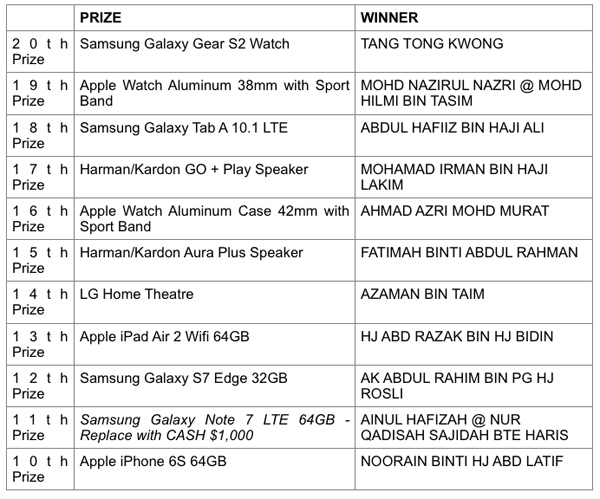

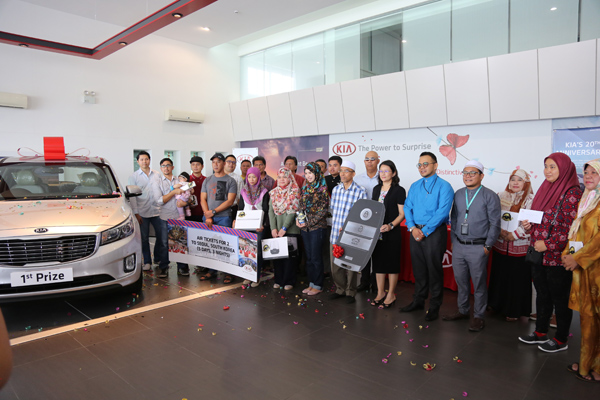
The top 20 winners for the Kia 20th Anniversary draw

He is one happy man and also for his son

2nd place winner who still won an awesome prize

The 20th consolation place. Samsung Galaxy Gear S2 watch by Tang Tong Kwong
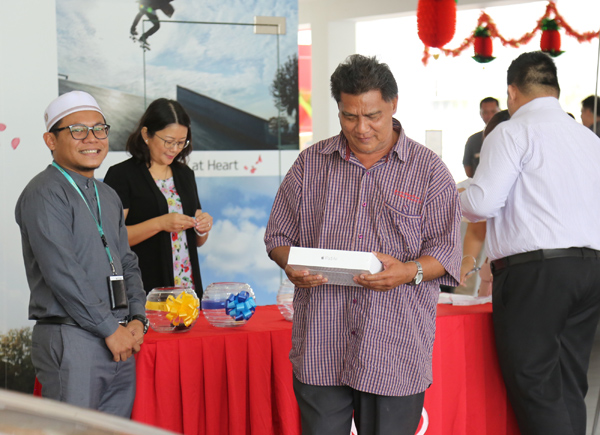
Hj Abd Razak won an Apple Air Pad

Ainul Hafizah won BND 1,000 cash prize as a replacement for the discontinued Note 7

My former classmate Firdaus bin Pehin Dato Hj Abdullah won an Apple iPhone 6s Plus

Another iPhone winner

A winner for the Apple Macbook Pro 13”

All smiles from the grand winner
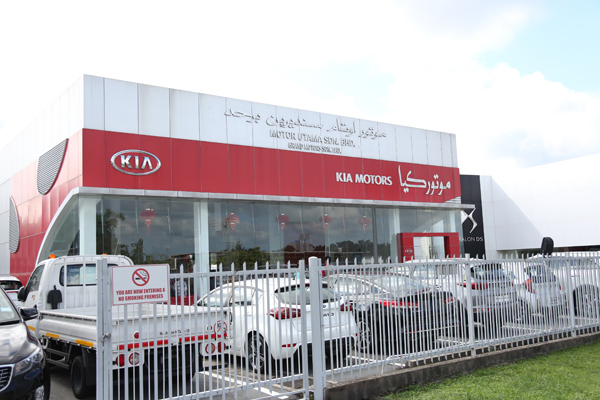
How’s your 2017 so far?
Hello 2017.. I haven’t official post anything personally on 2017 or a shoutout. Well, most of you do follow on my social media platforms and it’s easy for me to neglect my once ever popular way to update which is through my blog. We are almost half way mark to January 2017 and I haven’t had the opportunity yet to hand write 2017 on any document just yet. I’m pretty sure that I will make those minor errors, penning down 2016 instead of 2017.
As for resolutions, I haven’t been making any for the past few years because my resolutions are always redefined and ongoing. So I had it with having resolutions to cap the year. I would say that some weren’t accomplished – like having my own studio area, eating lean food (which I did for two months) and also focus on speech writing (which I have no discipline). This year, I shall be continuing my routine – taking pictures, typing articles, continue to be a social media junkie, practice more tennis and build the toastmasters community in Brunei.
Below are some images that I want to share with that that had happened a couple of weeks in January 2017. Have a great weekend ahead.
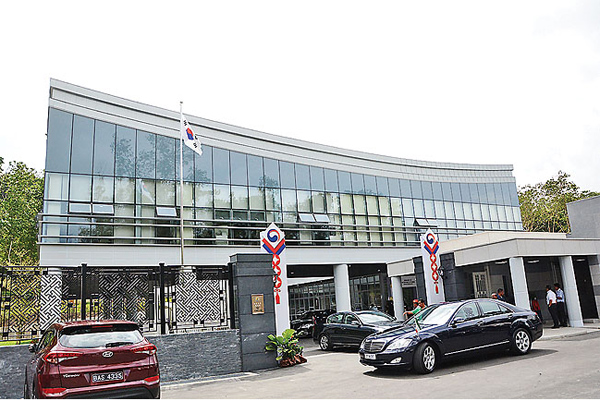
The new chancery for Republic of Korea in Brunei Darussalam located at the Diplomatic Enclave. It was launched on the 10th January 2017 with the present of a few ministers and of course, Cho Won-Myung, the Korean Ambassador to Brunei Darussalam. Image courtesy of James Kon of Borneo Bulletin.

I’ve been quite addicted to FIFA mobile now. Sometimes I overspent on buying coins just to get the players. It’s not as easy as it seems. Lots of patience required.

Pehin Lau presented donations to those affected from the fire of the Kg. Ayer last year. He is such a cool guy indeed. Lets hope more private companies come in and help to support for a good cause.

Kia motors is having a grand draw for this Friday and the winner will win a new Kia carnival and even the shortlisted winners will walk away with something. Good luck to all the shortlisted ones.

My first hike of 2017 and also Jaymee’s. We hiked a total of maybe 4-5 km.

A movie that I enjoyed and yes, it’s a slow burn indeed. Not many would enjoy this type of film. It has a deeper feel and I love the music score. Also a great performance by Amy Adams. This is my rating for Arrival which is now screening in our local cinemas.

The Pokka Bonanza Third Weekly Draw at Freshco last weekend. The winner won himself a Go Hero Session 5. The final draw will be during the Consumer Fair (18th to 22nd January).

We had a mini pot luck to cap off the year of 2016. Thanks for all the wonderful food.

Full moon for baby Caylan during 1st January 2017. I can’t imagine Hui Chiet being a mother and wow, here she is. Enjoy parenthood 😀

Apart from tennis, I do have my badminton sessions with my buddies. It’s good to see they sweat it out and appreciate their health.

Our birthday are pretty close to one another. So there’s no reason for us to forget each other’s birthday. We surprised her with a cake at Bali Pitstop on the struck of midnight.

I had my fair share too after a few days. This time during our badminton session. My actual surprise was to see my old time friend Seng Yee. Made by day. Thank you everyone for the surprise gesture.

Congratulations to Hjh Rohaidah bte Hj Jumat for winning the grand draw of Charcoal BBQ & Grill and she won herself an Umrah package for two, inclusive return air tickets and ground arrangements. She received the mock prize from Operation Manager Sinar Abdul and Executive Chef Liska Tumbelaka.

Check out the lunch promo set from Charcoal for only BND 9.90 and it comes with a free flow of beverage. Great deal indeed.

Bandar experienced a small tremor after the earthquake that hit off near the Philippines. It forced many to evacuate the buildings in town for precaution measures.

The launch of the Mitsubishi ASX MY17 last weekend at The Mall

Now this is quite interesting. Hoco Creative just launched a new platform to promote musicians, composers from Brunei through Rewind.Asia So do check them out on their Facebook Page (or click this image to follow their updates. I’m quite impressed with their branding and their short music videos, showcasing our local talents with popular cover songs. The mini launch took place at Sejalin Living showroom.

Something for you all to look forward to this Sunday at Sejalin Living. Stand a chance to win a brand new Beovision Horizon TV.

Congratulations Edy Zurina for your first speech in toastmasters. We all look forward to your future speeches 😀 And I didn’t know you like public speaking

Brendan Ti is one friend that I’m gonna miss. A very hard working friend whenever I need him and always been a strong player in any events that we created. Fly high, bro, and I hope you will fly us in three years’ time 😀 This image was taken during his final role as the Toastmaster of the Evening last Monday. He will fly off to New Zealand for his pilot course.

Congratulations to Sweet as Sara for opening their new cafe which is located at Setia Kenang II

I finally had the chance to try out drinks from Beskeet (located at KB Sentral). I quite like it and thanks Sandy for the drink 😉
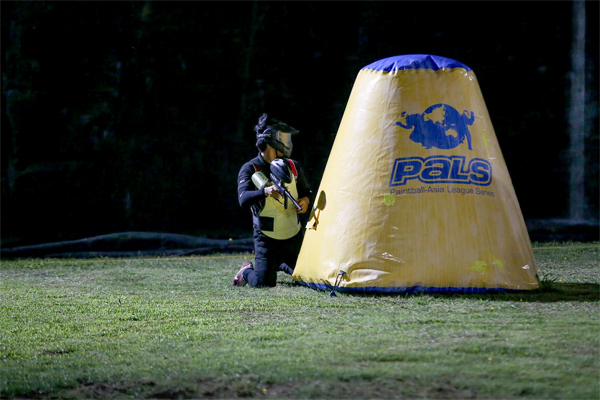
An event I missed last week. The launch of the new logo for RBTS Paintball and also night paintball. Team AnakBrunei defended their title while Borneo Bulletin came second. My RA team finished 3rd together with DST.
Audi sets new sales record: 1.871 million deliveries in 2016
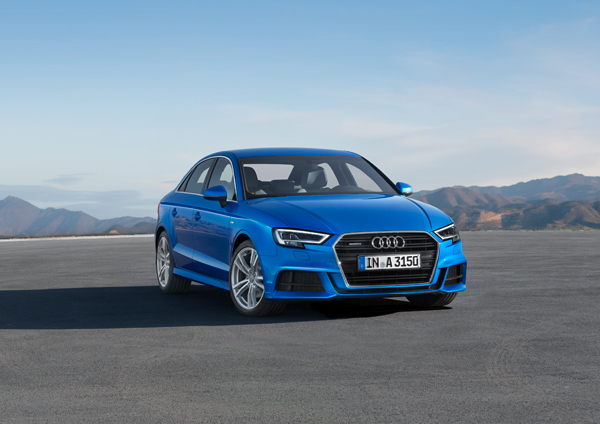
The Audi A3 sedan was Brunei’s best selling Audi for the second year. The new facelift as seen here will be available soon.
AUDI AG increased its global sales to around 1,871,350 automobiles in 2016, 3.8 percent more than in the previous record-breaking year 2015. During the ongoing, wide-ranging renewal of the model range, sales increased in all core regions: in Europe (+7.6%), in North America (+5.3%) with further growth in the plateaued U.S. market (+4%) and in Asia-Pacific (+0.5%). In all five of its largest individual markets, the four rings sold more automobiles than ever before. Worldwide, demand increased for the seventh year in a row since 2009. Compared with 949,729 customers in 2009, the company almost doubled its market success over this period.
The launch of the new Audi A4 in the overseas markets was well received as its global sales expanded year-on-year by 7.6 percent to around 337,550 units. In Europe, where the model was already available throughout the full year, the A4 took the number one spot in its premium segment, up 25.7 percent to around 164,600 units sold. The update of Audi’s mid-size class is set to continue this year in international markets with the new A5 Coupé and new A5 Sportback, following on from its European market introduction at the end of 2016.
The second generation of the full-size Q7 SUV completed its global market introduction in 2016, with sales up 43.6 percent to around 102,200 customers. As such, the Q7 doubled the average annual sales of its predecessor, achieving more than 100,000 deliveries per year for the first time ever. The new Q2 extends the popular SUV family from the four rings to a compact city format. Its European premiere in late 2016 generated high demand at Audi dealerships; more markets will follow in 2017. With the new Q5, the generation changeover for Audi’s top-selling SUV is also set to initiate this year.
The renamed Audi Sport GmbH provided another growth engine for Audi in 2016. As its flagship model, the new R8 accelerated by 31.8 percent to about 2,890 sports cars sold. The entire R and RS family exceeded the 20,000 unit mark for the first time with strong gains of 18 percent to around 20,200 automobiles.
“The excellent feedback for our latest automobiles shows that our model and technology initiative is paying off. This year we will further drive forward the comprehensive renewal of the Audi portfolio and successively roll out new models in the markets,” says Dietmar Voggenreiter, Board Member for Sales and Marketing at AUDI AG.
Connect with us at https://www.facebook.com/AudiBrunei/ and https://www.instagram.com/audibrunei/ or visit our local model range at http://www.audi-brunei.com/sea/brand/bn.html

